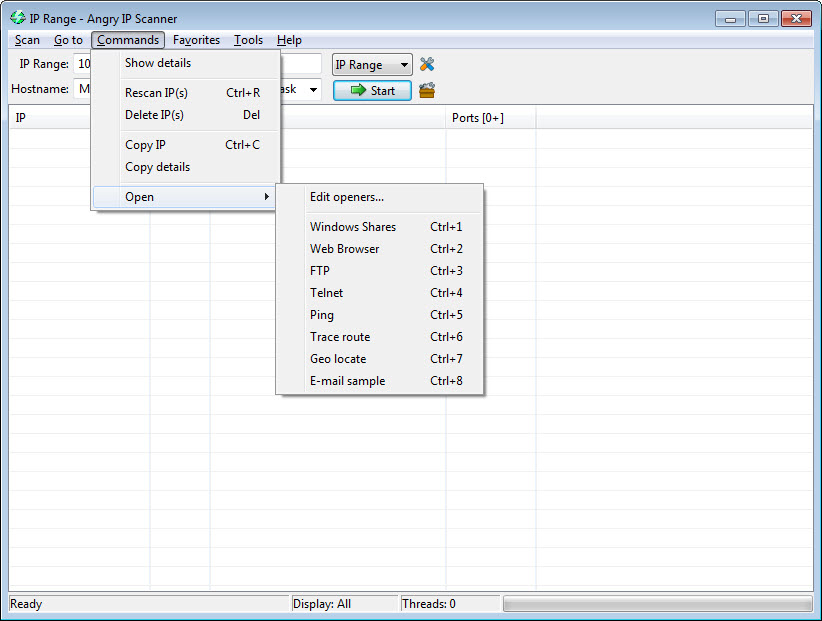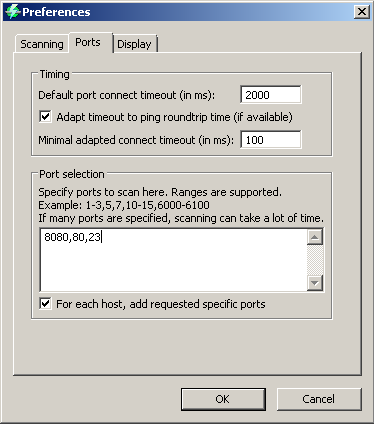


The Zombie host responds with RST packet to the attacker with IPID set to 12.Ĩ. After some time, the attacker again sends the SYN packet to the Zombie host, but Zombie host was waiting for the ACK packet from the attacker as Zombie had already sent a SYN/ACK packet in step number 2.ħ. Zombie on receiving the SYN/ACK packet from the victim sends the RST packet back to the victim with IPID 11.Ħ. In the case of open port, the victim responds with SYN/ACK to the Zombie because source IP in step 3 was set to Zombie.ĥ. The attacker sends the spoofed SYN packet to the victim at 10.10.10.30, with the source IP of the Zombie (10.10.10.20)Ĥ. The Zombie responds with SYN/ACK packet with IPID 10.ģ. The attacker sends the TCP SYN packet to the Zombie, which is up and idle.Ģ. Let us look into the below diagram to understand how this works.ġ. The idle host involved in this scan is called zombie and hence this scan is sometimes referred as zombie scan. This scan uses another host’s IP address as the source IP address instead of sending attacker’s machine IP address. The scan involves sending forged packet to the target host which looks like it is coming from some other host. Idle scan: An idle scan is a good option when you want to keep yourself anonymous while scanning. This type of scan is useful to detect the presence of a firewall. Ports that don’t respond or send ICMP error marked as filtered. If in response it receives RST that means the port is unfiltered and might be open or closed. TCP ACK scan: ACK scan is different from other scans because this scan doesn’t give the list of open or closed port instead it checks if the port is filtered or unfiltered.


If the port is open, it will ignore the packet. If the port is closed on the target machine, it responds with RST. XMAS scan sends the packet with FIN, URG and PUSH flag set whereas NULL SCAN send the packet without any TCP flag. Other scans which are similar to FIN scan are XMAS scan and NULL scan. No response from the target port can lead to the confusion whether the port is open or probe is blocked by a firewall. The closed port will respond to FIN packet with RST while open port will drop the packet. This scan is useful when we have to check a number of live host in a network.įIN scan: Unlike other scanning techniques, FIN scan sends a FIN packet to close a connection that is already open. ICMP scan: This is not a port scan, but it is used to ping the remote host to check if the host is up. Since there is no response from the open port, the scanner has to resent the packet multiple times leading to the delay. The major drawback of UDP scan is the scan is slow. If the port is open, the packet is accepted, and no response packet is sent. The port is considered as closed if the scanner receives the ICMP port unreachable error. UDP scan: UDP scan sends the UDP packet to every port in the scope of the scan. The disadvantage of this scan is it can be detected easily as it connects to each port. This method is faster than other methods mentioned in this article. If the port is closed the response from the remote host will be RST packet. The scanner complete the connection by sending the ACK packet. If the remote port responds with a SYN-ACK packet, that means the port is open. In this scan, the attacker sends a SYN packet to the remote port. If the port is listening, connect() will succeed. TCP Connect or Vanilla scan: In the connect scan, the OS sends the connect() system call to remote host. If no response is received after multiple tries, the scanner marks the port as filtered. open while an RST (reset) indicates the port is not listening i.e. The SYN-ACK packet from the target port indicates the port is listening i.e. In this scan, the scanner sends a SYN packet to initiate a communication and wait for a response. TCP SYN scan: SYN scan is also known as half-open scanning as it doesn’t connect completely to the port. Let’s look into each scan type in detail. There are multiple port scanning techniques available. These ports lie in the range of 1024-49151. Registered ports: These ports are associated with certain protocols or application.Well known ports: These ports are in the range of 0-1023.There are total 65536 ports each for TCP and UDP protocol which are divided into three ranges: Filtered port: There is no reply from the remote host.Closed port: The remote host sends a response indicating the connection is denied.Open port: The remote host sends a response to accept the connection.


 0 kommentar(er)
0 kommentar(er)
